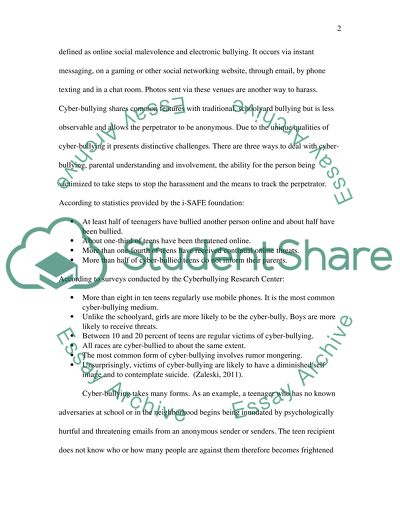Cite this document
(“Cyber-Bullying Research Paper Example | Topics and Well Written Essays - 1750 words”, n.d.)
Cyber-Bullying Research Paper Example | Topics and Well Written Essays - 1750 words. Retrieved from https://studentshare.org/information-technology/1460915-cyber-bullying
Cyber-Bullying Research Paper Example | Topics and Well Written Essays - 1750 words. Retrieved from https://studentshare.org/information-technology/1460915-cyber-bullying
(Cyber-Bullying Research Paper Example | Topics and Well Written Essays - 1750 Words)
Cyber-Bullying Research Paper Example | Topics and Well Written Essays - 1750 Words. https://studentshare.org/information-technology/1460915-cyber-bullying.
Cyber-Bullying Research Paper Example | Topics and Well Written Essays - 1750 Words. https://studentshare.org/information-technology/1460915-cyber-bullying.
“Cyber-Bullying Research Paper Example | Topics and Well Written Essays - 1750 Words”, n.d. https://studentshare.org/information-technology/1460915-cyber-bullying.


